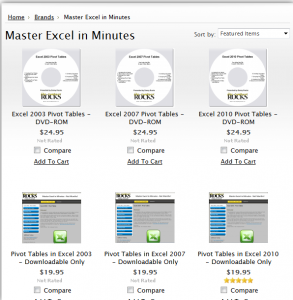A viewer wrote in to request a few videos that cover “The Basics” in Excel 2003. In this video lesson, I cover the basics of data entry.
Even if you have been using Excel for a number of years, I guarantee that you will pick up one or two tips in this video that will save you time and make you more productive.
Here are the steps to follow in this video lesson:
- Excel aligns “text” entries to the left-side of the cell. “Numeric” entries (including Dates & Times) are aligned to the right-side of the cell.
- All calculations in Excel MUST start with the =sign. This includes Formulas and Functions. Write formulas that refer to other cells. (Avoid writing formulas that only use constant values.)
- When we input data in a cell and press the ENTER key, Excel accepts the entry and makes the cell that is down one row in the column the “Active Cell.”
- To input data in the cells of the same row – and continue to use the ENTER key – first select the range of cells in the row.
- You can also select a range of cells in adjacent rows and columns. Excel goes down the cells in the column first and then moves automatically to the top row in the next column in your selection.















